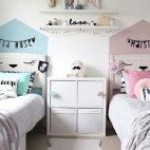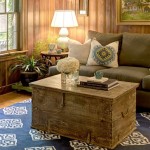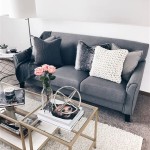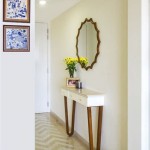How to Decorate a Small Log Home
Decorating a small log home presents a unique set of challenges and opportunities. The inherent charm of exposed logs creates a rustic ambiance, but the limited space demands careful planning and execution to avoid a cluttered or overwhelming aesthetic. Successful small log home decor focuses on maximizing space, complementing the log structure, and creating a functional and visually appealing environment.
The natural texture and color variations of the logs themselves form a significant part of the decor. Therefore, the choices made regarding furniture, textiles, lighting, and accessories should work in harmony with the existing log structure rather than compete with it. The goal is to create a cohesive and inviting space that feels both spacious and comfortable.
Prioritize Functionality and Multi-Functional Furniture
In a small log home, every square inch counts. The selection of furniture should prioritize functionality. Items that serve multiple purposes, such as sofa beds, storage ottomans, and dining tables with drop leaves, are invaluable. These versatile pieces can be adapted to different needs, maximizing the use of available space.
Consider wall-mounted shelves and cabinets to free up floor space. These storage solutions can house books, decorative items, and everyday essentials without encroaching on the limited room. Floating shelves, in particular, offer a minimalist and modern look while providing ample storage.
When choosing furniture, opt for pieces that are appropriately scaled for the space. Overly large sofas, armchairs, or coffee tables will overwhelm a small room, making it feel cramped. Smaller-scale furniture allows for better circulation and a more open and airy feel.
Built-in storage solutions are also worth considering. Custom-designed cabinets, shelves, and benches can be integrated into the architecture of the log home, providing seamless storage without taking up valuable floor space. This is particularly useful in areas such as entryways, bedrooms, and bathrooms.
Another aspect of functionality is smart organization. Employ storage containers, baskets, and organizers to keep clutter at bay. Designate specific areas for different items, ensuring that everything has a designated place. This helps maintain a sense of order and prevents the space from feeling chaotic.
Maximize Natural Light and Employ Strategic Lighting Techniques
Natural light is a crucial element in making a small log home feel larger and more inviting. Maximize the amount of natural light entering the space by keeping windows clean and unobstructed. Avoid heavy curtains or drapes that block sunlight. Sheer or light-filtering window treatments allow natural light to permeate the room while still providing privacy.
If possible, consider adding or enlarging windows to increase the amount of natural light. Skylights are also an excellent way to bring in additional light, particularly in areas where windows are limited. Strategically placed mirrors can reflect natural light, further enhancing the brightness of the space. Position mirrors near windows or light sources to amplify their effect.
In addition to natural light, artificial lighting plays a vital role in creating a well-lit and inviting atmosphere. Layered lighting, which combines ambient, task, and accent lighting, is essential for creating a balanced and functional lighting scheme. Ambient lighting provides overall illumination, task lighting provides focused light for specific activities, and accent lighting highlights architectural features or decorative elements.
Recessed lighting is a space-saving option for ambient lighting, as it does not take up any floor or wall space. Track lighting is another versatile option that allows for adjustable light direction. Task lighting, such as table lamps and floor lamps, should be strategically placed to provide adequate illumination for reading, working, or other activities.
Accent lighting can be used to highlight the log structure, artwork, or other decorative features. Uplighting, which shines light upwards onto the logs, can create a dramatic effect and emphasize the texture of the wood. Dimmers can be used to adjust the intensity of the lighting, allowing for customization based on mood and activity.
Choose a Cohesive Color Palette and Incorporate Textural Elements
A cohesive color palette is crucial for creating a sense of harmony and flow in a small log home. Opt for a limited color scheme that complements the natural tones of the logs. Neutral colors, such as whites, creams, grays, and browns, are excellent choices for creating a light and airy feel. These neutral hues can be accented with pops of color through accessories, artwork, or textiles.
Consider the undertones of the logs when selecting a color palette. If the logs have warm undertones, such as yellow or orange, choose colors that complement these tones, such as earthy greens, warm browns, and rusty reds. If the logs have cool undertones, such as gray or blue, choose colors that complement these tones, such as cool grays, blues, and greens.
Avoid using too many different colors, as this can make a small space feel cluttered and disorganized. Stick to a few key colors and use them consistently throughout the home. Use different shades and tones of the same colors to create depth and visual interest.
In addition to color, texture plays a significant role in creating a visually appealing and inviting space. Incorporate a variety of textures to add depth and interest to the room. Consider using natural materials, such as wood, stone, leather, and linen, to complement the rustic aesthetic of the log home.
Textured fabrics, such as woven rugs, knit throws, and velvet pillows, can add warmth and comfort to the space. Incorporate textural elements through artwork, such as paintings with thick brushstrokes or sculptures with rough surfaces. The interplay of textures can create a tactile and visually stimulating environment.
Consider the texture of the logs themselves when selecting other materials. The rough texture of the logs can be contrasted with smooth surfaces, such as glass, metal, or polished wood. This contrast can create a dynamic and visually appealing effect.
In conclusion, decorating a small log home requires careful planning and consideration. Maximizing space, optimizing natural light, and employing a cohesive color palette are crucial for creating a functional and aesthetically pleasing environment. By prioritizing functionality, embracing natural light, and incorporating textural elements, it is possible to transform a small log home into a comfortable and inviting retreat.

19 Log Cabin Home Decorating Ideas For Your In 2025

19 Log Cabin Home Decorating Ideas For Your In 2025

19 Log Cabin Home Decorating Ideas For Your In 2025

19 Log Cabin Home Decorating Ideas For Your In 2025

Log Cabin Interior Ideas Caribou Creek Homes

3 Ways To Brighten Up The Interior Of A Log Cabin Home

How To Elegantly Style A Log Home Architectural Digest

Log Cabin Decorating Ideas For 2025 Rustic Canyon Home

19 Log Cabin Home Decorating Ideas For Your In 2025

Log Cabin Decorating Styles







